*NURSING > CASE STUDY > John Washington _ Appendicitis/Appendectomy_2021 | Appendicitis/Appendectomy SKINNY Reasoning Sugges (All)
John Washington _ Appendicitis/Appendectomy_2021 | Appendicitis/Appendectomy SKINNY Reasoning Suggested Answer Guidelines
Document Content and Description Below
Appendicitis/Appendectomy SKINNY Reasoning Suggested Answer Guidelines John Washington, 14 years old Primary Concept Inflammation Interrelated Concepts (In order of emphasis) • Pain • Stre ss • ... Clinical Judgment • Patient Education NCLEX Client Need Categories Percentage of Items from Each Category/Subcategory Covered in Case Study Safe and Effective Care Environment ✓ Management of Care 17-23% ✓ ✓ Safety and Infection Control 9-15% Health Promotion and Maintenance 6-12% ✓ Psychosocial Integrity 6-12% ✓ Physiological Integrity ✓ Basic Care and Comfort 6-12% ✓ ✓ Pharmacological and Parenteral Therapies 12-18% ✓ ✓ Reduction of Risk Potential 9-15% ✓ ✓ Physiological Adaptation 11-17% ✓1 SKINNY Reasoning Part I: Recognizing RELEVANT Clinical Data History of Present Problem: John Washington is a healthy 14-year-old African American male who weighs 150 lbs. (68.2 kg). He came to the emergency department because he woke up this morning at about 2 am with "excruciating" generalized abdominal pain around his belly button that has been progressively getting worse over the past several hours. It is now 2 pm. He took ibuprofen 400 mg PO this morning, which decreased the pain some but is now more painful and uncomfortable. The pain is now localized to his RLQ. The pain increases with walking and movement but he feels better when he lies down in a fetal position. He vomited three times after he drank some orange juice for breakfast this morning and has had nothing to drink since. He continues to feel nauseated but has not had an emesis since this morning. Personal/Social History: John lives with his mother and three younger brothers. He is active in athletics and has a strong social network of friends and family in the inner-city neighborhood where he lives. What data from the histories are RELEVANT and must be interpreted as clinically significant by the nurse? (Reduction of Risk Potential) RELEVANT Data from Present Problem: Clinical Significance: Woke up this morning at about 2 am with "excruciating" generalized abdominal pain the past several hours that has been progressively getting worse. He took ibuprofen 400 mg PO this morning, which decreased the pain some but is now more painful and uncomfortable. The pain is now localized to his RLQ. The pain increases with walking and movement but feels better when he lies down and lies in a fetal position. Pain is a clinical RED FLAG, especially when there is no prior history. Sudden onset of pain that is severe and becomes gradually worse makes this complaint even more concerning. Took an adequate dose of pain medication that did relieve the pain temporarily. This is a classic clinical RED FLAG for appendicitis. The appendix is located in the RLQ. Early appendicitis tends to be generalized pain, but over time the pain becomes localized and is focused right where the inflammation is present. There is no one uniform set of symptoms for appendicitis; however, that migratory pain is a consistent symptom of acute appendicitis Inflammation from the appendix causes irritation/inflammation of the peritoneum. If appendicitis is the present problem, movement of any kind tends to worsen the pain, while lying quietly relieves the pain. RELEVANT Data from Social History: Clinical Significance: He is active in athletics and has a strong social network of friends and family in the inner-city neighborhood where he lives. No concerns present, but relevant to note that he has a strong social network to draw strength and support from. Patient Care Begins: Current VS: P-Q-R-S-T Pain Assessment: T: 100.5 F/38.1 C (oral) Provoking/Palliative: Movement, palpation P: 106 (regular) Quality: Sharp, cramping R: 20 (regular) Region/Radiation: Mid abdomen, RLQ BP: 142/76 Severity: 8/10 O2 sat: 99% RA Timing: Continuous2 What VS data are RELEVANT and must be interpreted as clinically significant by the nurse? (Reduction of Risk Potential/Health Promotion and Maintenance) RELEVANT VS Data: Clinical Significance: T: 100.5 F/38.1 C (oral) P: 106 (regular) BP: 142/76 Pain 8/10, sharp, cramping, continuous in RLQ Low-grade temperature present. This is consistent with the activation of the inflammatory response. Clinical RED FLAG! The inflammatory response is being activated for a reason! HR is elevated. The nurse must determine why. Temperature is too low to cause this degree of HR elevation. The most likely reason is the amount of pain he is c/o Is higher than normal. Pain is the most likely reason Pain is the fifth VS and is always relevant. 8/10 is severe pain and it’s continuous. It is there for a reason. This degree and location of pain are consistent with appendicitis. Initial Assessment by Primary Nurse What body system(s) will the nurse most thoroughly assess based on the problem and the clinical data collected to this point? (Reduction of Risk Potential/Physiologic Adaptation) PRIORITY Body System(s): PRIORITY Nursing Assessments: Abdomen/GI Inspection: skin (coloration, vascularity, striae, scars, lesions, rashes) • Contour – (flat, rounded, scaphoid, protuberant/distended) • Umbilicus – contour • Symmetry (relaxed, supine position) • Abdominal movement during breathing Auscultation: (completed before palpation/percussion to not alter bowel sounds) • Bowel sounds – 1 minute per quadrant with the diaphragm • Intensity, pitch, frequency Palpation: • Light palpation to all quadrants – 1 to 2 cm to detect tenderness • Assess for rebound tenderness-pain that increases when fingers removed quickly from abd • Palpate bladder- light palpation ONLY; you only want to assess to see if it is distended Current Assessment: GENERAL SURVEY: Alert, oriented, pleasant, appears tense, uncomfortable, dress appropriate for the season, hygiene and grooming normal for age and gender. NEUROLOGICAL: Alert & oriented to person, place, time, and situation (x4) HEENT: Head normocephalic with symmetry of all facial features. PERRLA, sclera white bilaterally, conjunctival sac pink bilaterally. Lips, tongue, and oral mucosa pink and moist. RESPIRATORY: Breath sounds clear with equal aeration on inspiration and expiration in all lobes anteriorly, posteriorly, and laterally, nonlabored respiratory effort on room air. CARDIAC: Pink, warm & dry, no edema, heart sounds regular, pulses strong, equal with palpation at radial/pedal/post-tibial landmarks, brisk cap refill. Heart tones audible and regular, S1 and S2 noted over A-P-T-M cardiac landmarks with no abnormal beats or murmurs. ABDOMEN: Abdomen round, rebound tenderness in RLQ to gentle palpation. Rebound tenderness present in RLQ, BS + in all four quadrants, bowel sounds diminished/hypoactive GU: Voiding without difficulty, urine clear/dark amber INTEGUMENTARY: Skin warm, dry, intact, normal color for ethnicity. Cap refill <3 seconds. Hair soft3 What assessment data is RELEVANT and must be interpreted as clinically significant by the nurse? (Reduction of Risk Potential/Health Promotion & Maintenance) RELEVANT Assessment Data: Clinical Significance: GENERAL SURVEY: Appears tense, uncomfortable ABDOMEN: Abdomen round, tenderness in RLQ to gentle palpation. Rebound tenderness present in RLQ. GU: Voiding without difficulty, urine clear/dark amber His nonverbal body language communicates that he is uncomfortable and in pain, as he reports he is. Rebound tenderness in RLQ is another clinical RED FLAG for appendicitis. Rebound tenderness, or pain when the hand is quickly removed after palpation is caused by peritoneal irritation. McBurney's point, located twothirds of the distance between the umbilicus and the anterior superior iliac crest, typically overlies the appendix and is, therefore, the point of maximal tenderness. The remainder of the nursing assessment is unremarkable and WNL. Dark amber urine is consistent with concentrated urine and dehydration. Radiology Reports: What diagnostic results are RELEVANT and must be interpreted as clinically significant by the nurse? (Reduction of Risk Potential/Physiologic Adaptation) Ultrasound: Abdomen Results: Clinical Significance: Enlarged, non-compressible appendix This confirms the clinical cues that have been collected to this point that suggest appendicitis. Lab Results: Complete Blood Count (CBC) WBC HGB PLTs % Neuts Bands Current: 14.5 15.2 245 88 0 What lab results are RELEVANT and must be recognized as clinically significant by the nurse? (Reduction of Risk Potential/Physiologic Adaptation) RELEVANT Lab(s): Clinical Significance: These labs are ALWAYS RELEVANT, therefore they must be intentionally noted by the nurse! WBC: 14.5 Hgb: 15.2 Platelets: 245 • ALWAYS RELEVANT based on its correlation to the presence of inflammation or infection • Usually increased if infection present. Consistent with the problem of known appendicitis. • ALWAYS RELEVANT to determine anemia or acute/chronic blood loss. No problem present. • Relevant whenever there is a concern for anemia or blood loss or a patient on heparin • WNL. He will be going to surgery, so an adequate level of platelets for clotting needs to be noted. • If platelets are low, it will be significant and must be noted. distribution normal for age and gender. Skin integrity intact, skin turgor elastic, no tenting present - - - -- - - Continued [Show More]
Last updated: 1 year ago
Preview 1 out of 13 pages
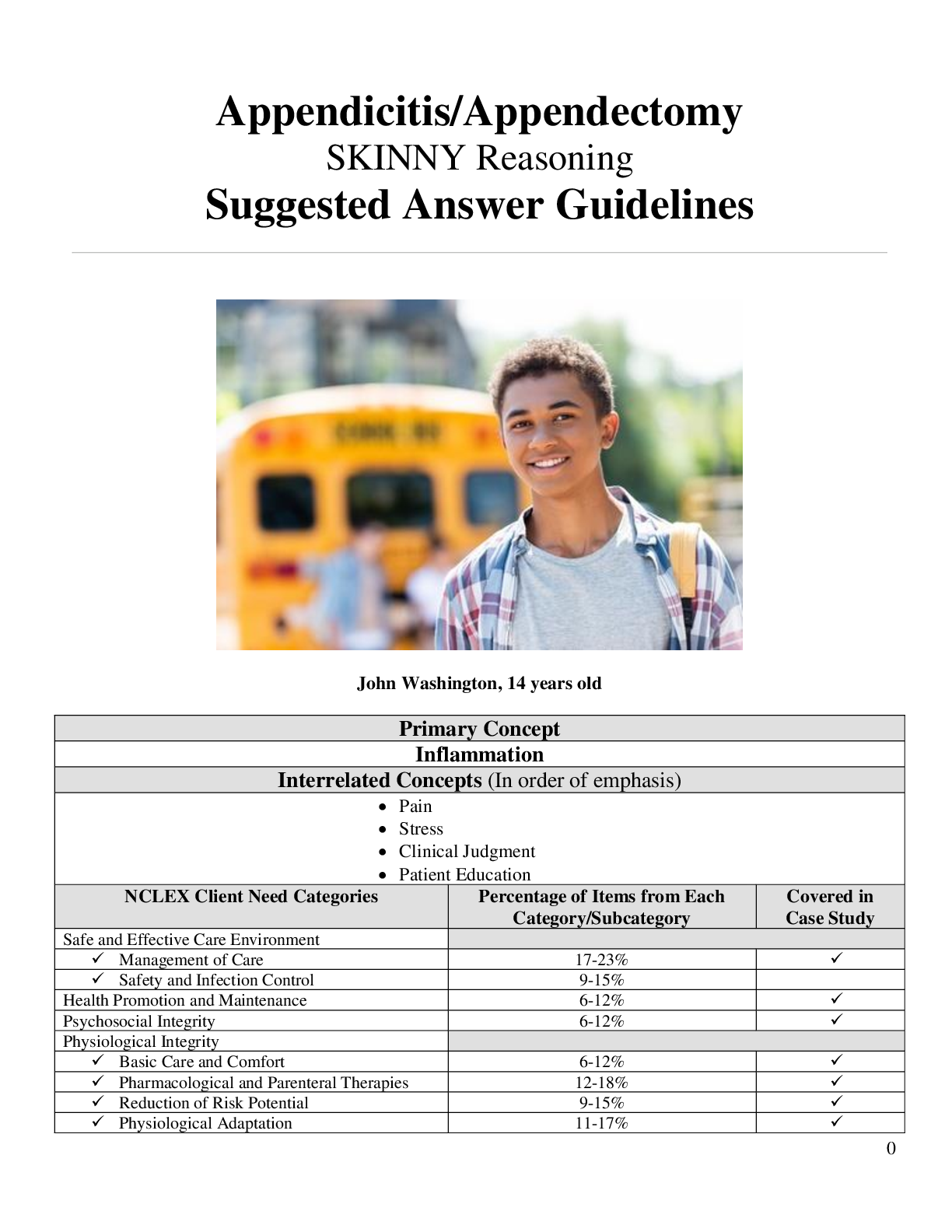
Reviews( 0 )
Document information
Connected school, study & course
About the document
Uploaded On
Aug 08, 2021
Number of pages
13
Written in
Additional information
This document has been written for:
Uploaded
Aug 08, 2021
Downloads
0
Views
50


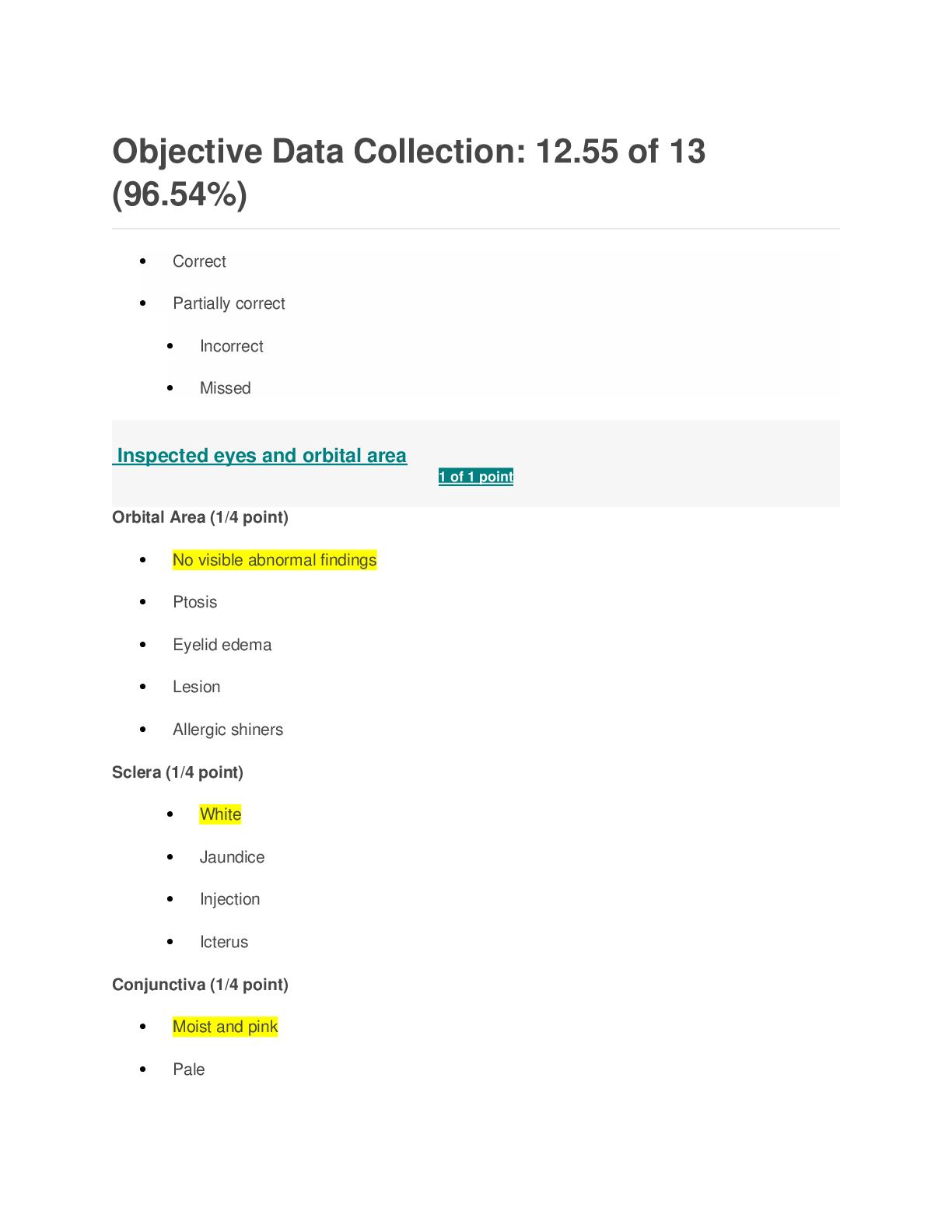



.png)
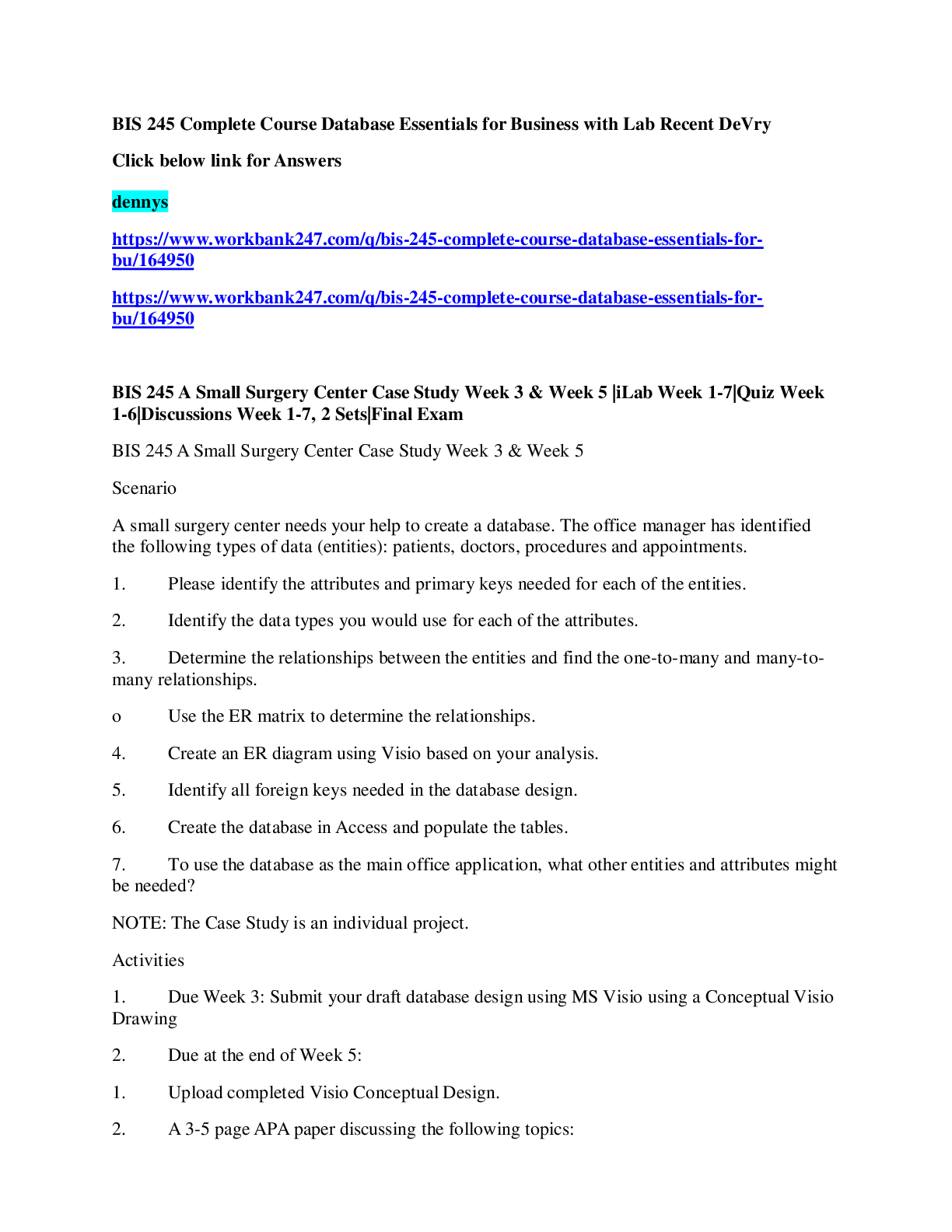
.png)
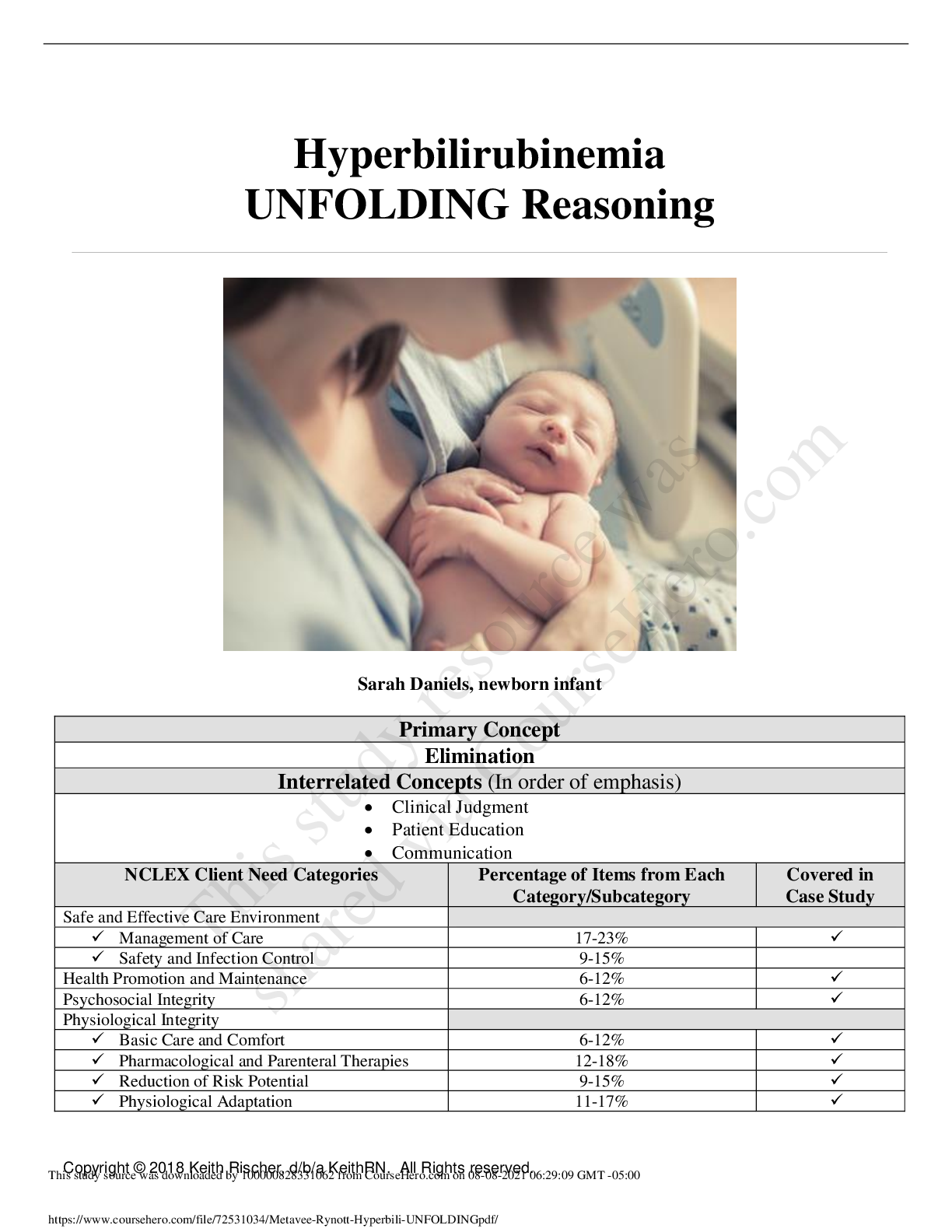
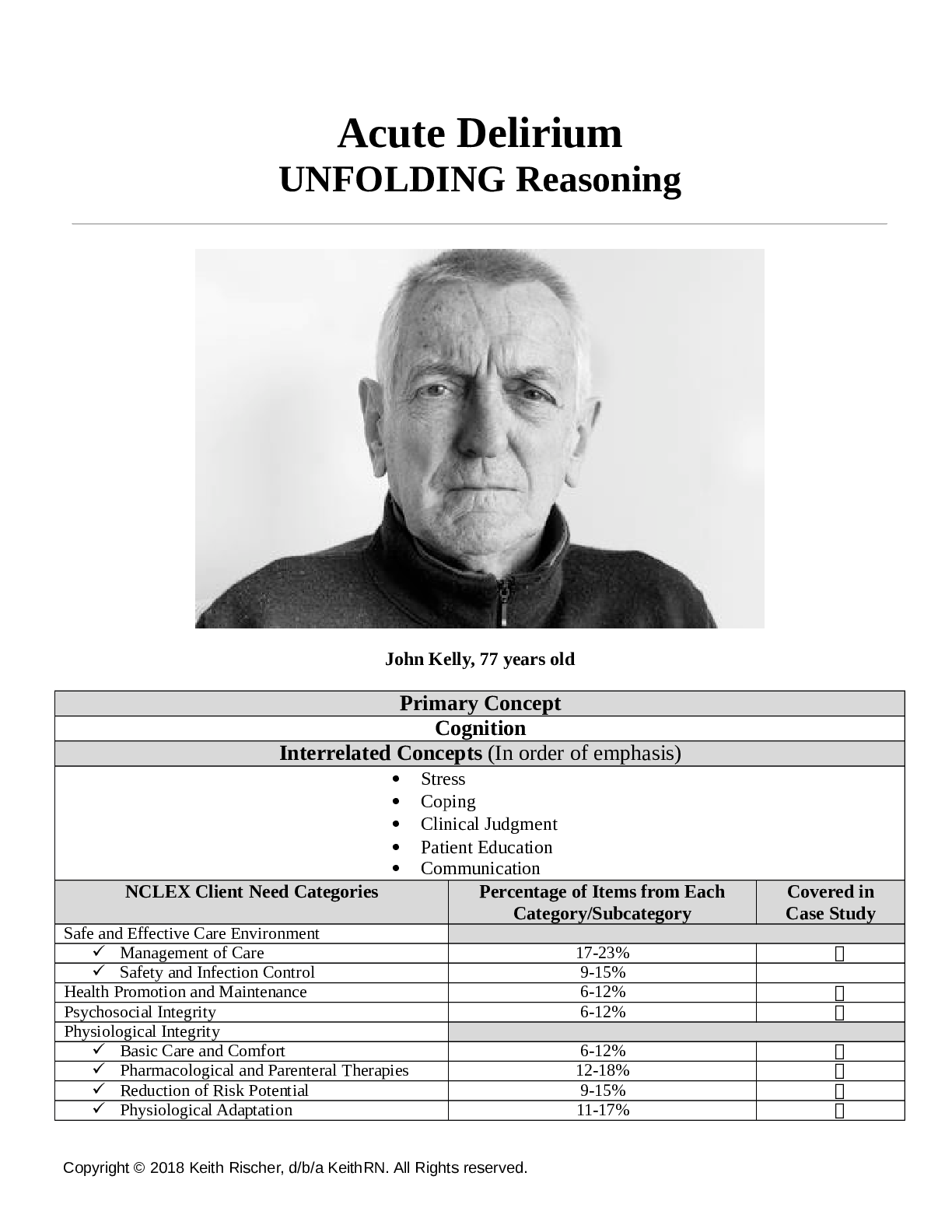
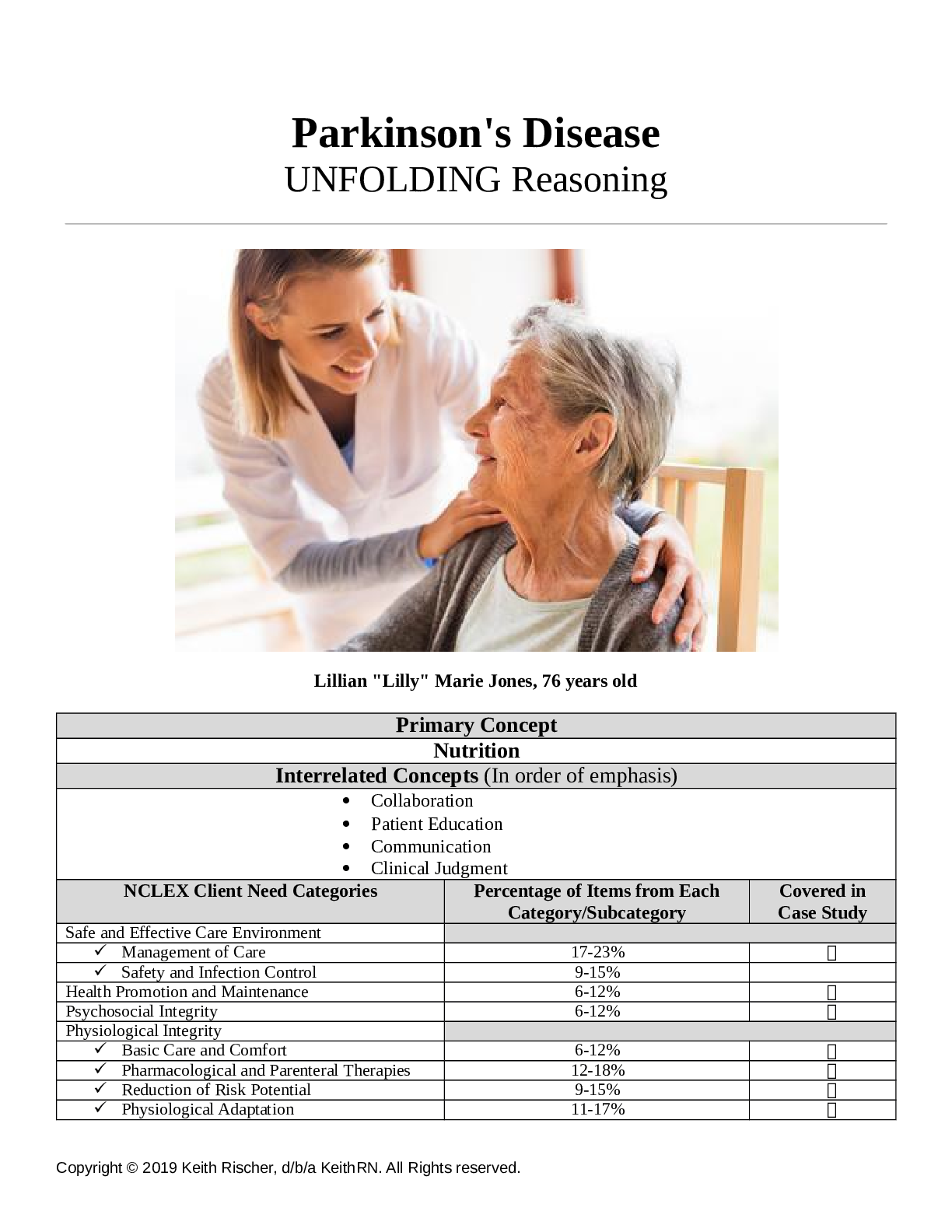

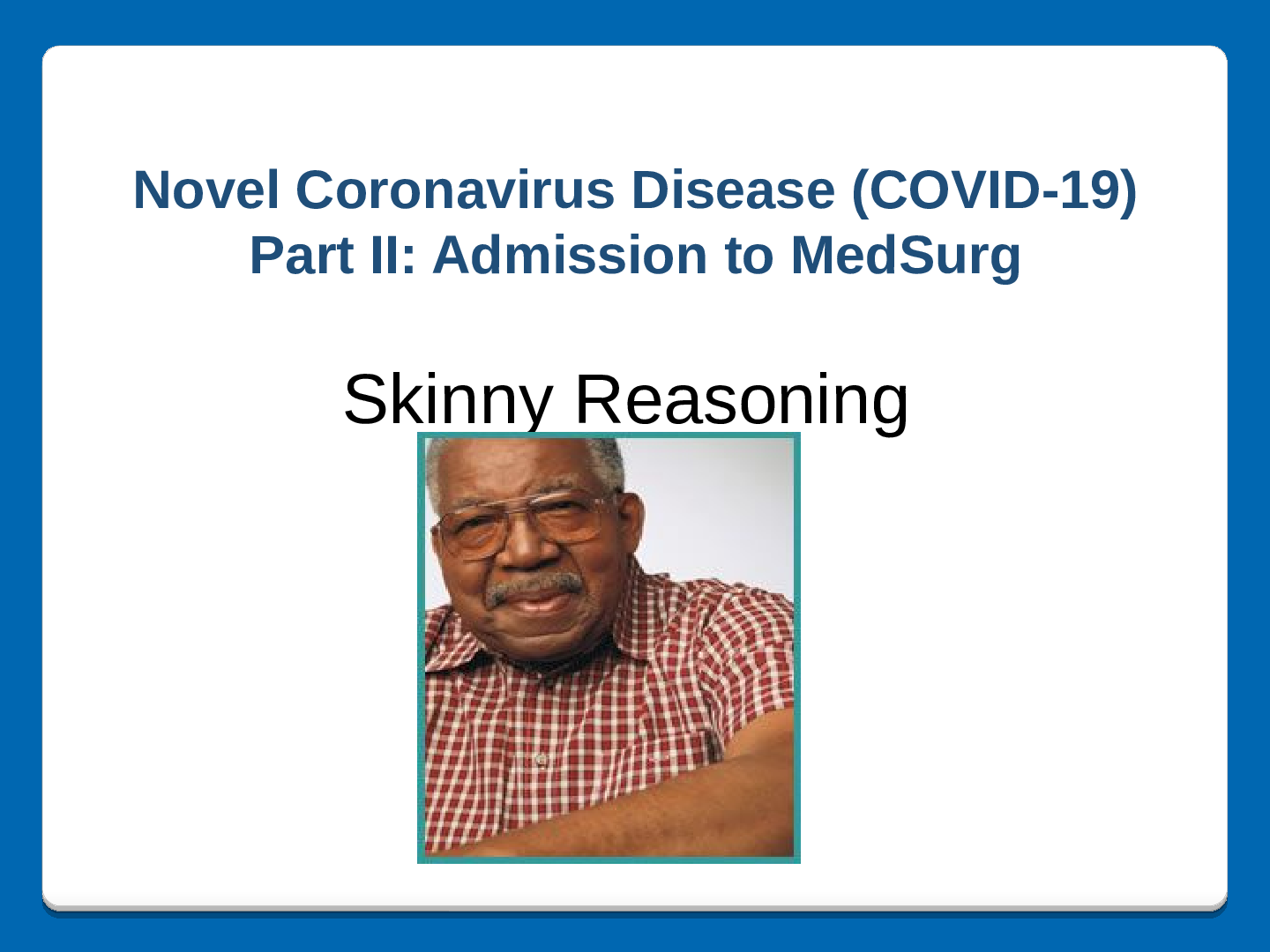


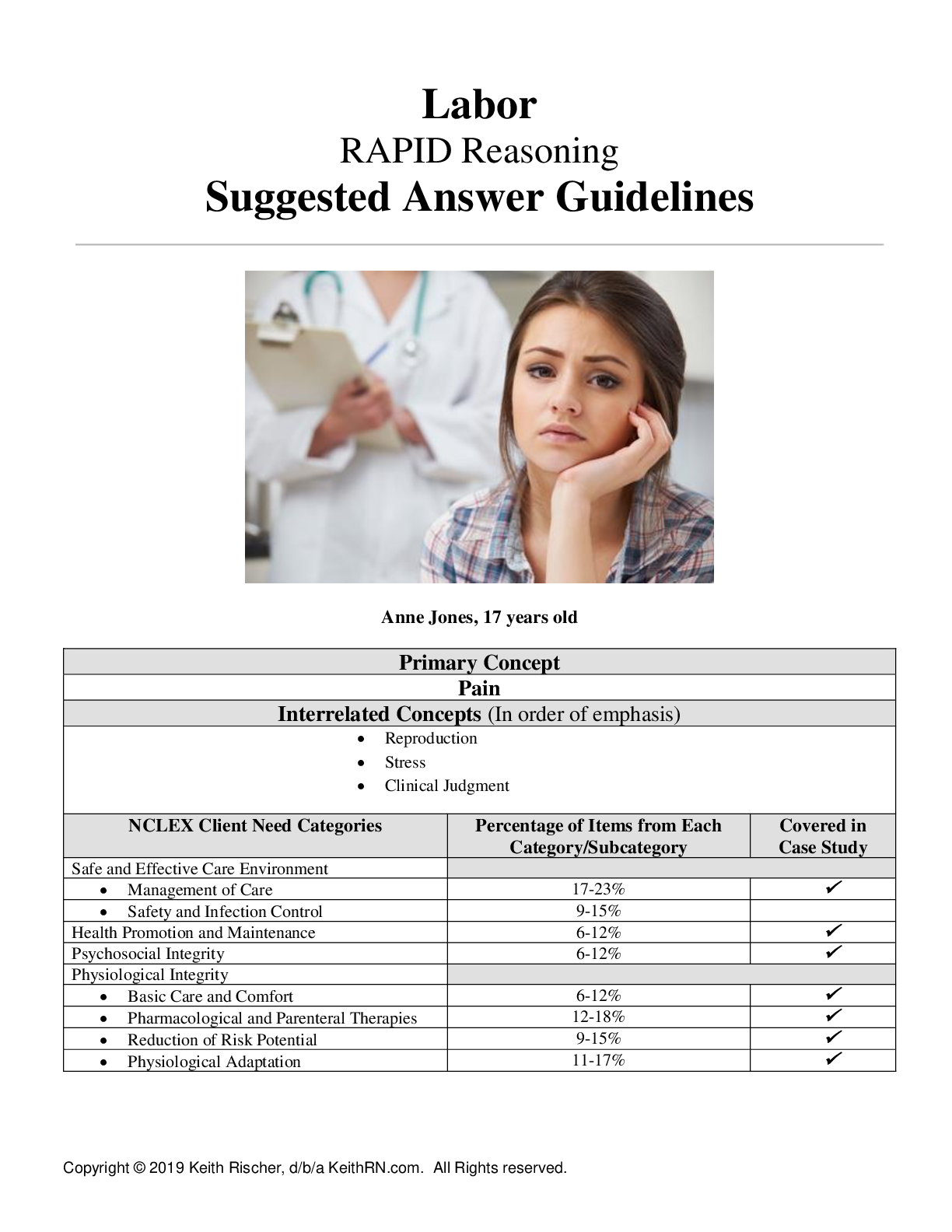
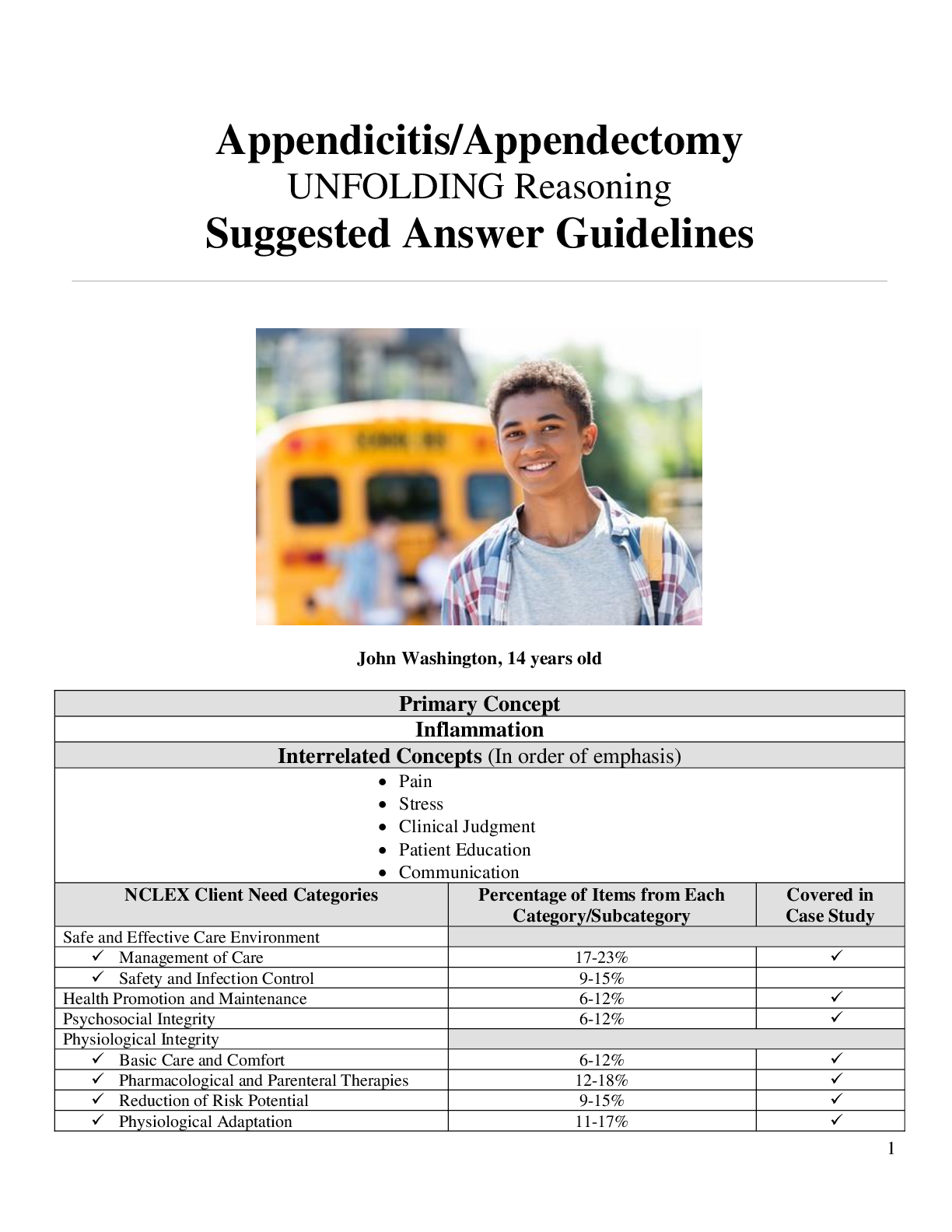
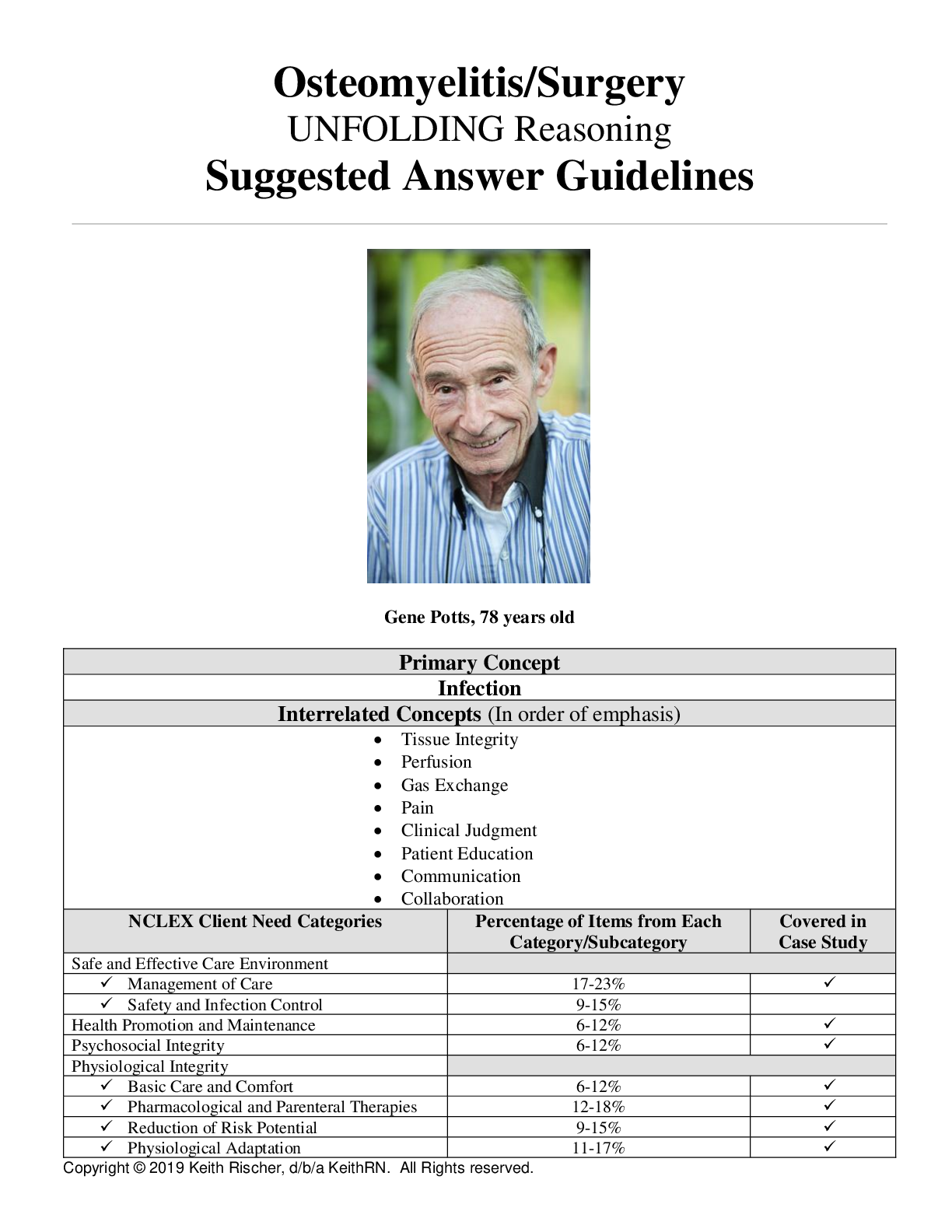
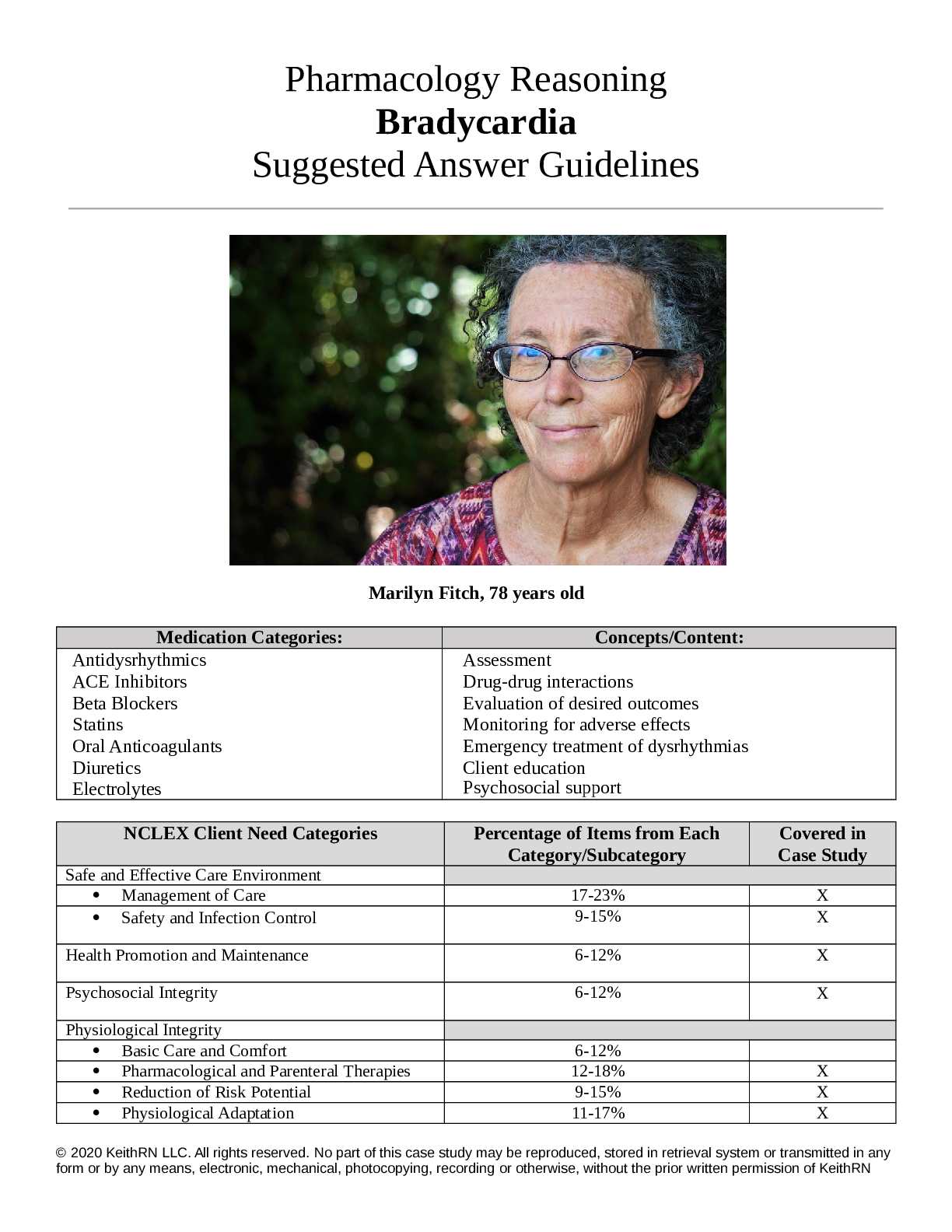
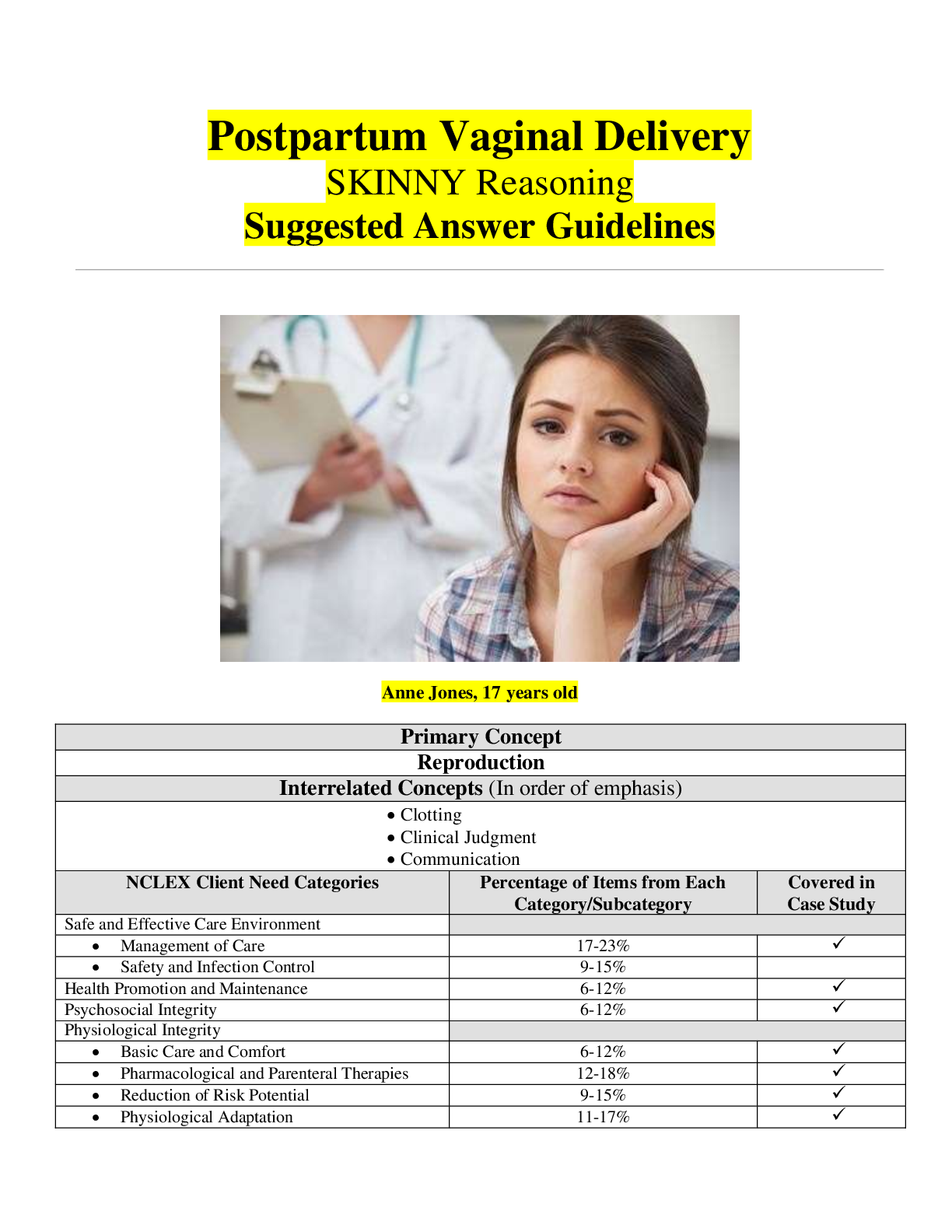
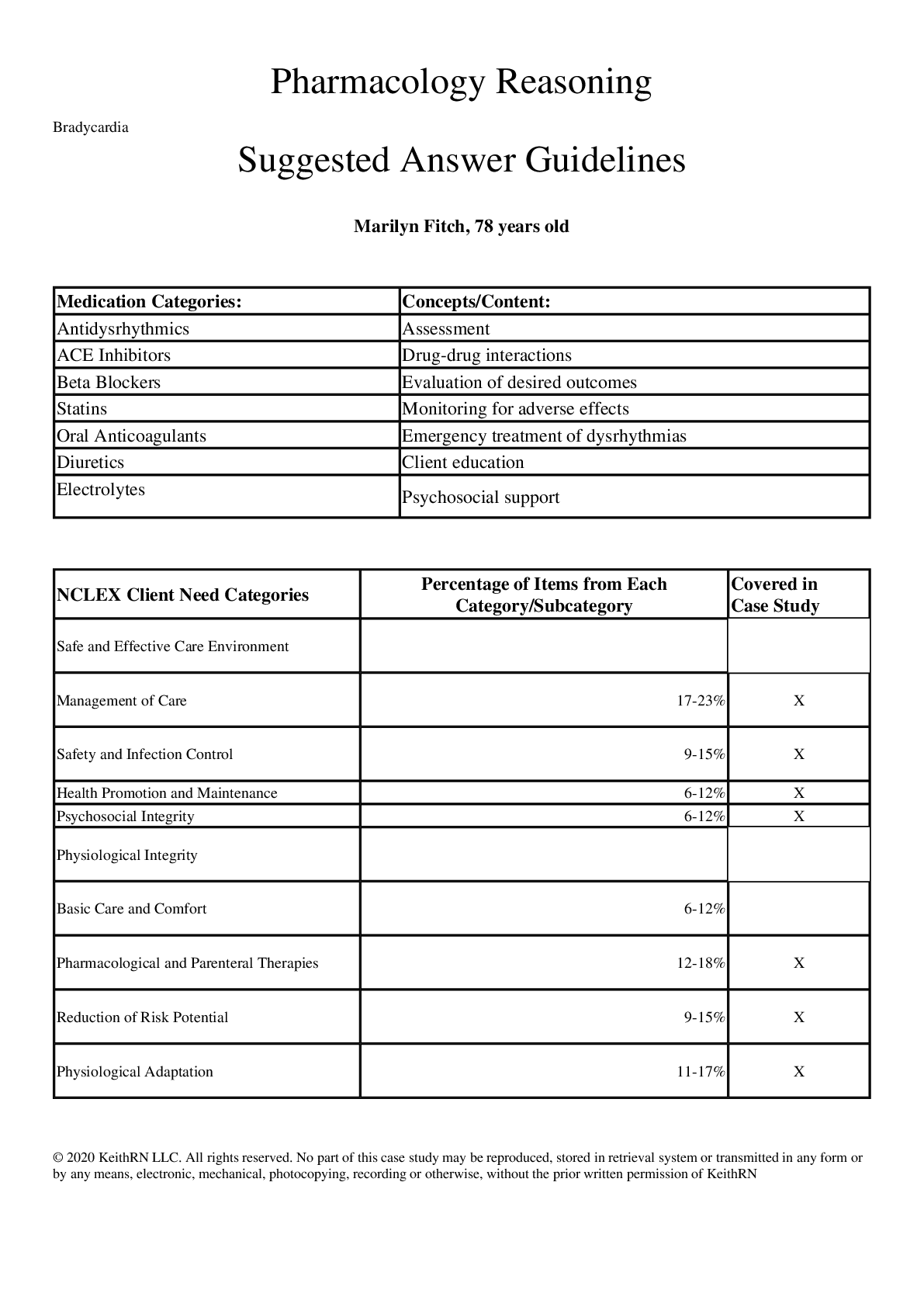
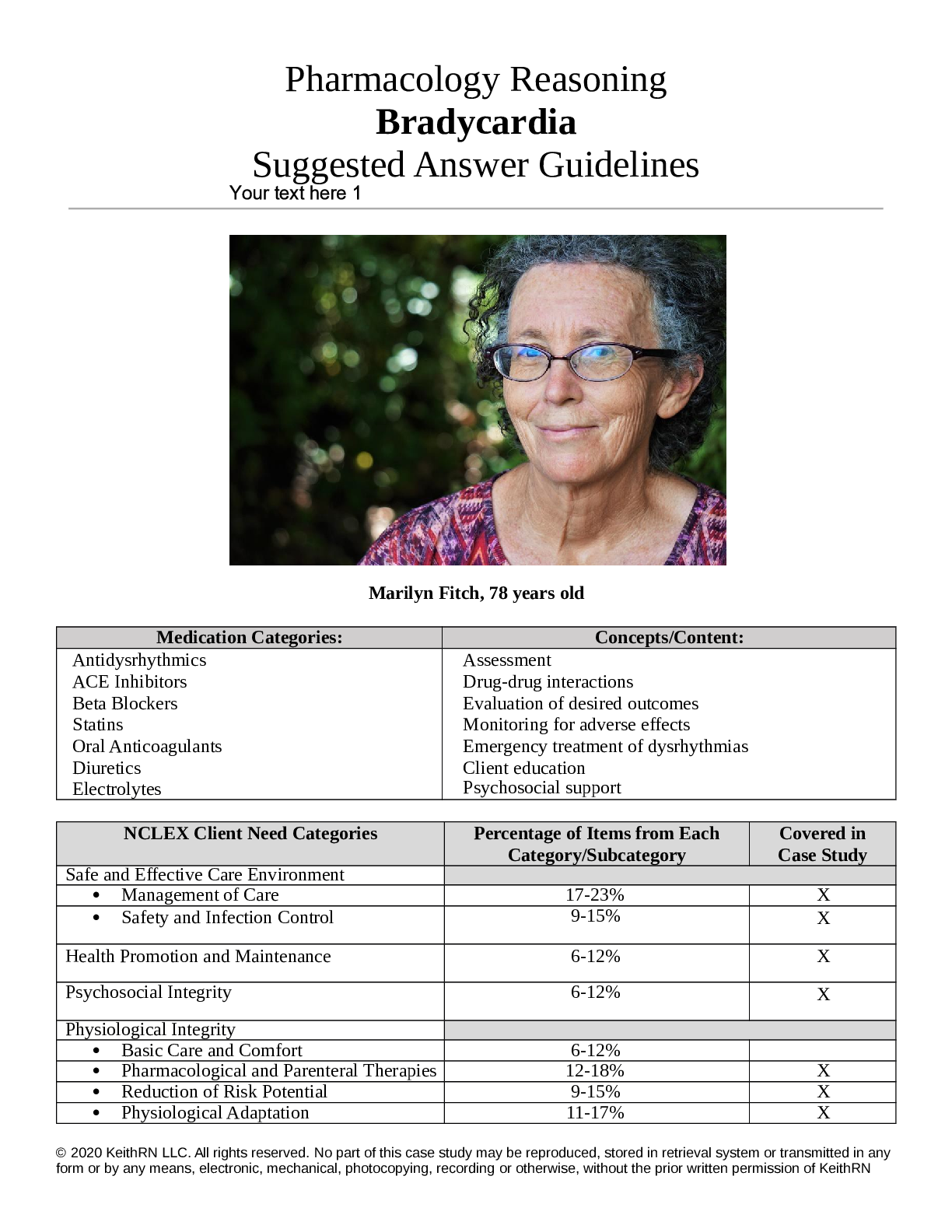
 Correct Study Guide, Download to Score A.png)
 Correct Study Guide, Download to Score A.png)
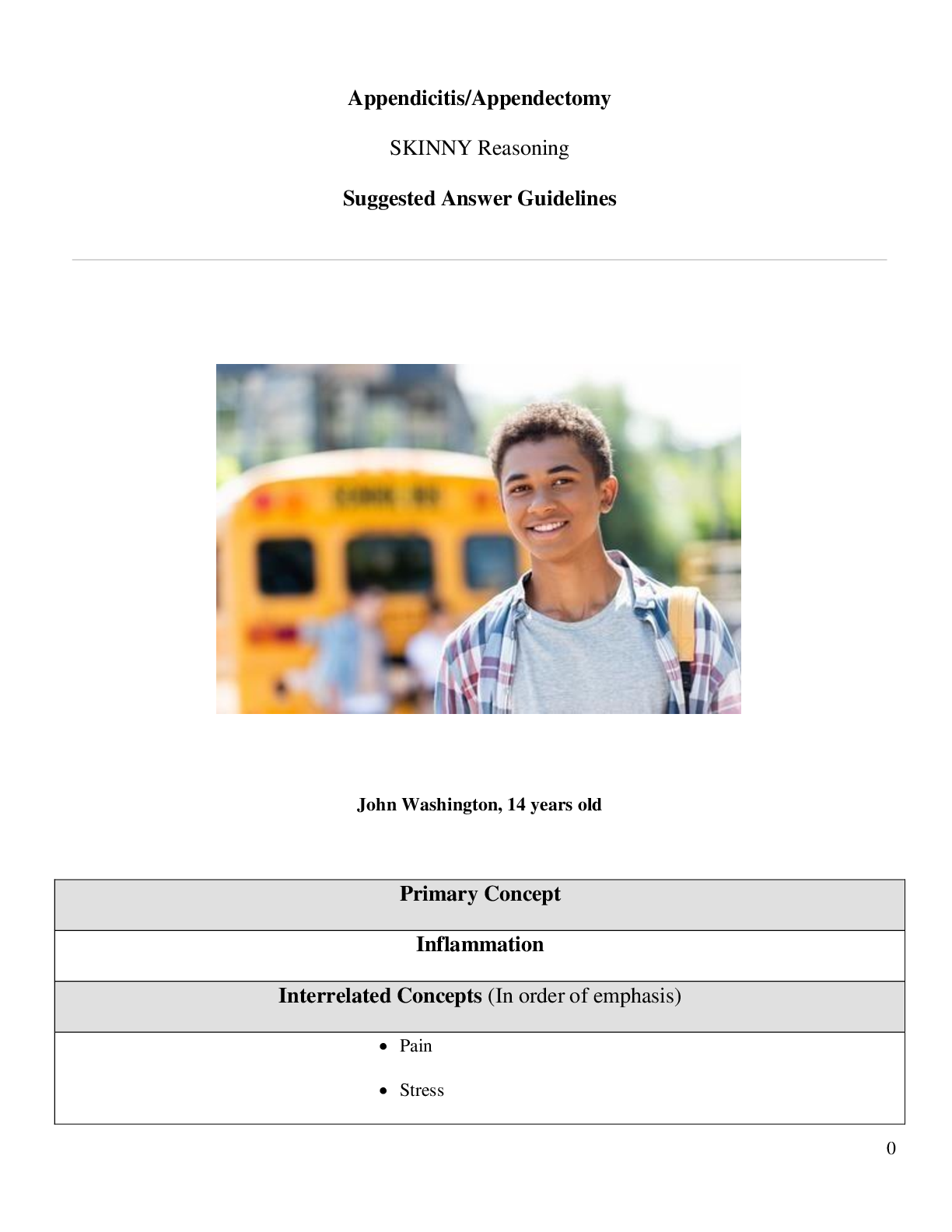
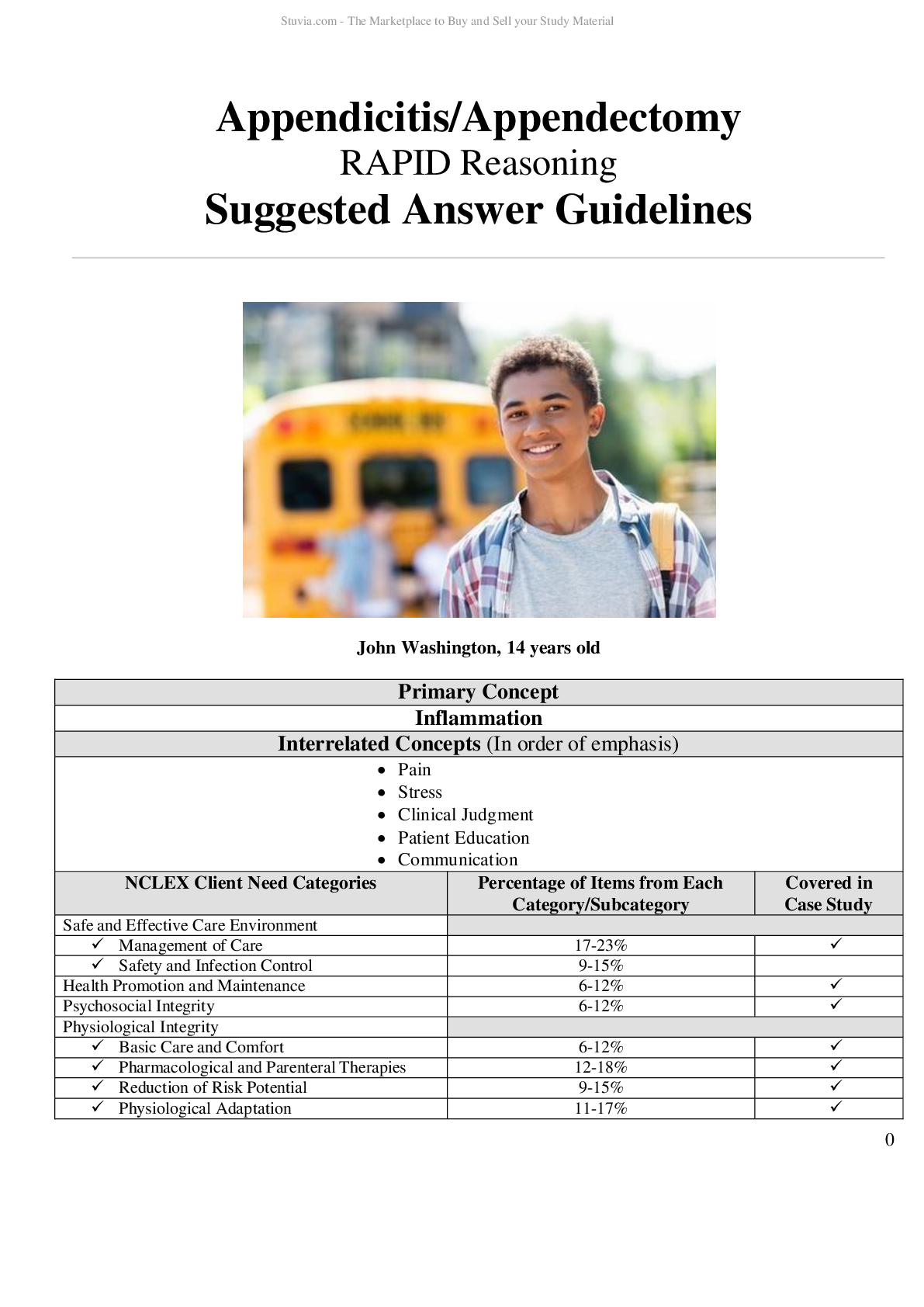
 Correct Study Guide, Download to Score A.png)

